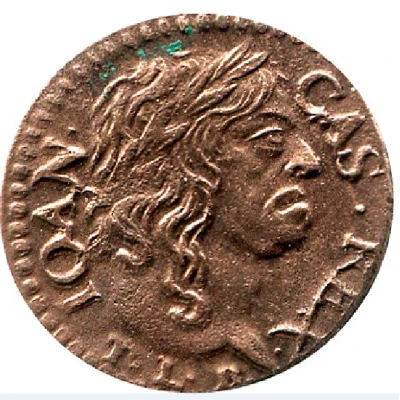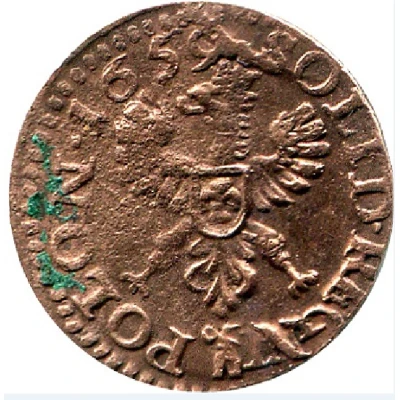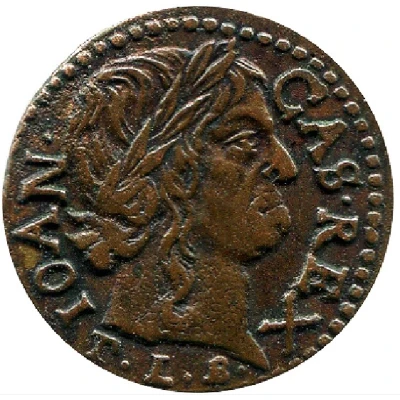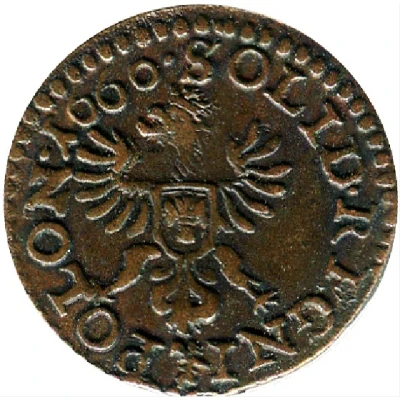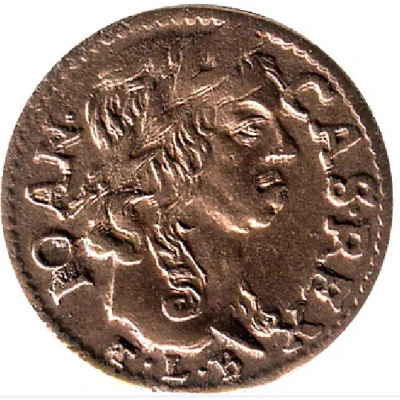
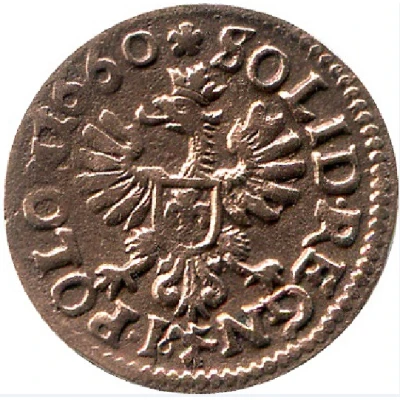

© Cezary Wolski
Szeląg koronny - Jan II Kazimierz Waza Kraków
1660 year| Copper | - | - |
| Issuer | Polish–Lithuanian Commonwealth |
|---|---|
| King | John II Casimir Vasa (1649-1668) |
| Type | Standard circulation coin |
| Year | 1660 |
| Value | 1 Schilling (1 Szeląg) (1⁄90) |
| Currency | First Zloty (1573-1795) |
| Composition | Copper |
| Shape | Round |
| Demonetized | Yes |
| Updated | 2024-10-07 |
| Numista | N#119300 |
|---|---|
| Rarity index | 61% |
Reverse
Script: Latin
Lettering:
SOLI REGN (_) I POLO 1660 (rose)
SOLID REG (_) NI POL 1660 (without rose)
SOLID REG (_) NI POL 1660 (rose)
SOLID REG (_) NI -- POL 1660 (rose)
SOLID REG (_) NI POLO 1660 (rose)
SOLID REG (Ślepowron in right) NI POLO 1660 (rose)
SOLID R -- EG (Ślepowron in right) NI POLO 1660 (rose)
SOLID REG (Ślepowron in right) NI POLON 1660 (rose)
SOLID REGN (_) I POLO 1660 (rose)
SOLID REGN (_) I POLON 1660 (rose)
SOLID REGNI (_) POLONI 1660 (rose)
Comment
© Cezary WolskiKK60.B.31a.11
KK60.A.31.21.1a
KK60.B.15.11.7a
KK60.A.31.21.2
KK60.B.31a.12
KK60.A.31 - Big head type 1 / without TLB / Ślepowron arms + rose
KK60.B.11 - Small head type 1 / with TLB / Ślepowron arms + rose
KK60.B.11a - Small head type 1a
KK60.B.11b - Small head type 1b
KK60.B.12 - Small head type 2
KK60.B.13 - Small head type 3
KK60.B.14 - Small head type 4
KK60.B.15 - Small head type 5
KK60.B.15a - Small head type 5a
KK60.B.16 - Small head type 6
KK60.B.21 - Medium head type 1
KK60.B.22 - Medium head type 2
KK60.B.31 - Big head type 1
KK60.B.31a - Big head type 1a
KK60.B.32 - Big head type 2
KK60.C.11b - Small head type 1b / with TLB / Ślepowron arms + dot / (or small star)
KK60.C.15a - Small head type 5a
KK60.C.16 - Small head type 6
Interesting fact
The Szeląg koronny coin was issued during the reign of King Jan II Kazimierz Waza (John II Casimir Vasa) of Poland in the 17th century. What's interesting about this coin is that it was made of copper, which was a relatively new material for coins at that time. Prior to this, most coins were made of precious metals like gold and silver, so the use of copper was a significant departure from tradition. This change in material was likely due to the increasing demand for coins as trade and commerce grew, and the need for a more affordable and accessible alternative to precious metals.
